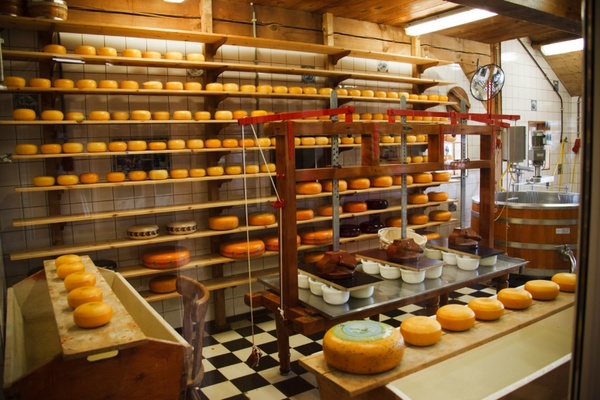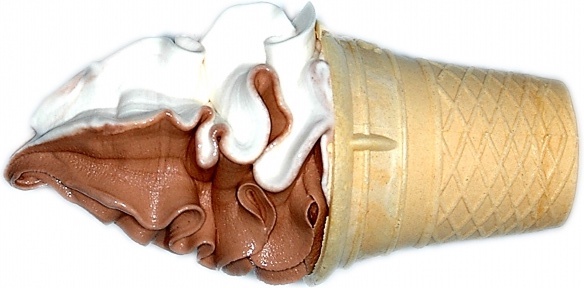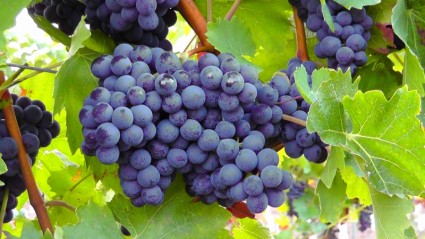
by Lorri | Dec 14, 2016 | UnCorked
When it comes to holiday entertaining, it’s hard to beat the fun and ease of a wine and cheese party. It is such an effortless gathering considering there is rarely, if any, cooking and prep time involved other than shopping and setup. How do you find perfect wine for cheese pairing?
The menu can be as simple as wine and cheese. But if you want to have more substantial food offerings, you can add crusty breads and other complementing foods such as charcuterie, olives and nuts or an array of fruits such as pears, apples and grapes.
Wine and cheese have many similar characteristics, even the language used to describe them. Fermentation, acidity, light-bodied versus full-bodied, region identity, and even the “terroir” are used to describe cheese. Cheese is deeply connected to the animal from whose milk it’s made and to the animal’s environment. A cheese made from the milk of a goat that was feeding on the juniper grasses on the hillside pastures of Corsica will have a definite “terroir,” just as red wines include flavors and aromas from eucalyptus trees growing close to the vines from which its grapes are grown.
In the past, most of us followed the time-honored rule of “pair cheese and wines that share the same home.” Italian gorgonzola with chianti and French brie with Champagne. But the rule is not as sensible when you consider what wine to pair with cheese made from the cows of Wisconsin.
It’s not that some of the rules should be disregarded. It’s just sometimes best to use them as a starting point and then let your taste buds create new rules!
Stick with reputable wine and cheese retailers to guide you on specifics while helping you stay within budget. And keep in mind that quality is better than quantity. Here are some of my favorite combinations.
Happy celebrating!
Sparkling wine and brie
THE VALUE
- NV Zonin Sparkling Wine, Italy (about $14 retail)
THE SPLURGE
- NV Gaston Chiquet Champagne, France (about $49 retail)
Sauvignon blanc and chevre goat cheese
THE VALUE
- 2015 Nobilo Sauvignon Blanc, New Zealand (about $14 retail)
THE SPLURGE
- 2015 Bell Sauvignon Blanc, California (about $16 retail)
Chardonnay and camembert
THE VALUE
- 2014 Apaltagua Chardonnay, Chile (about $11 retail)
THE SPLURGE
- 2015 Paul Hobbs Chardonnay, California (about $40 retail)
Merlot and pecorino fresca
THE VALUE
- 2014 McManisFamily Vineyards Merlot, California (about $12 retail)
THE SPLURGE
- 2014 Robert Mondavi Merlot, California (about $26 retail)
Cabernet sauvignon and aged gouda
THE VALUE
- 2014 McNab Ridge Winery Cabernet Sauvignon, California (about $15 retail)
THE SPLURGE
- 2013 Spann Cabernet Sauvignon, California (about $30 retail)
Port and Stilton
THE VALUE
- Dow’s Late BottledVintage Port, Portugal (about $25 retail)
THE SPLURGE
- Graham’s 10-Year-Old Tawny Port, Portugal (about $45 retail)

by Lorri | Aug 31, 2016 | UnCorked
Who says we can’t pair ice cream and wine? Experts have long preached that it’s the “impossible pairing,” generally because of the low temperature of the ice cream. But this week I set out to find the ideal pairings because our relationship with ice cream is changing quickly as summer comes to an end. There is just something about outdoor grilling, picnics and summer fun that ice cream completes. Some might even argue ice cream is a dessert of necessity. Take the same bowl of ice cream in winter and, though delicious, it often involves snuggling under a blanket around a fire. (Not so bad a situation but you get my point.)
The low temperature, sweetness, acidity and tannic structure are the misfits with wine and ice cream. Most wines have a good deal of acidity and the pairing sometimes can taste like you poured lemon juice over the ice cream. Tannin levels also are important because the delicate sweet notes of the dessert are often swept away by the dryness and bitterness.
Always up for a challenge, my exploration found these to fit the pairing guidelines, whether the wine/ice cream dessert is enjoyed outside on a sunny patio in these last days of summer or snuggled up in the winter cold.
Possibly my favorite ice cream pairing is vanilla with Pedro Ximenez (PX). Some like to have a glass of this wine while eating a scoop, but I think the best approach is to dive right in by pouring the wine over the ice cream. PX is a very sweet sherry from Jerez and Morilla Montilles in Spain.
Most of us love chocolate with any pairing, but add a semi-sparkling dessert wine and you possibly have perfection. The best is with a semi-sparkling wine showcasing a taste of red berries.
Butter pecan ice cream has rich toasty and nutty flavors that mimic most buttery oaked chardonnay styles. To make the pairing even more complex add crushed pecans as your topping.
As with almost all rose wines they match into most desserts but seem to excel with strawberry ice cream. Many rose wines have tastes of strawberries and raspberries pairing into the ice cream flavors.
THE VALUES
- 2014 Montes Classic Chardonnay, Chile (about $11 retail)
- 2014 Banfi Rosa Regale, Italy (about $16 retail)
THE SPLURGE
- 2014 Hogwash Rose, California (about $18 retail)
- NV Osborne Pedro Ximenez Sherry, Spain (about $27 retail)

by Lorri | Sep 9, 2015 | UnCorked
Grenache (also known as garnacha) is often seen as an underdog. A grape that simply ends up in a great blend. We tend to overlook that it is a stand-alone varietal, even though it’s one of the most planted of wine grapes in the world.
It’s big, bold and aggressive, but also lovable, friendly and approachable.
Originally from Spain, this grape is widely grown in the southern Rhone region. It spread into France as the kingdom of Aragon expanded its borders. For many years this grape was only used as a blending partner, adding to the finesse of some of the greatest wines of the world. Most Chateauneuf-du-Pape and other Rhone wines are made from a blend using this grape. The average Chateauneuf contains about 10 percent syrah but 65 percent grenache. Today grenache are grown in Spain, Italy, France, California and Australia.
Continuing my promotion of rosé, it is worth noting that some of the best wine made of grenache is rosé. The Saignee Method is an old technique that transforms the grape from a full-bodied red wine to a rosé wine. Saignee is a French term meaning “bled,” referring to the process of running off or “bleeding” a certain amount of free-run juice (juice from freshly picked grapes that is released during the stemming process) using crushed dark-skinned grapes, after a short pre-fermentation maceration. The aim is primarily to produce a lightly pink wine with more flavor compounds.
THE VALUE
- 2013 Yellow Tail Grenache, Australia (about $8 retail)
THE SPLURGE
- 2013 D’Arenberg Custodian Grenache, Australia (about $20 retail)


